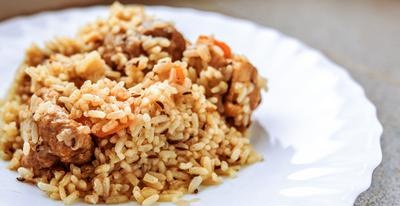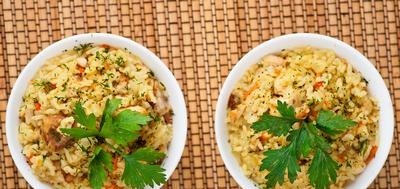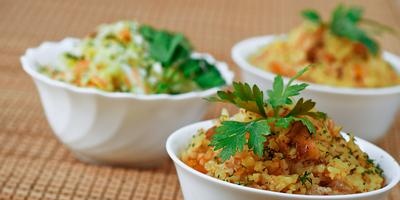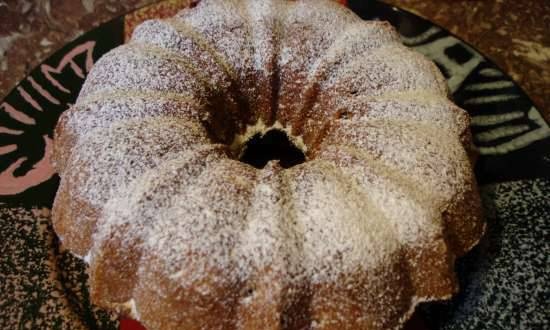|
 Perhaps no other grain culture has brought people as much grief and suffering as rice. A hundred years ago, monarchs issued decrees prohibiting the sowing of rice. Cities and villages were fenced off from the ill-fated plantations, like from the plague, by kilometer-long sanitary barriers. Perhaps no other grain culture has brought people as much grief and suffering as rice. A hundred years ago, monarchs issued decrees prohibiting the sowing of rice. Cities and villages were fenced off from the ill-fated plantations, like from the plague, by kilometer-long sanitary barriers.
But, despite the innumerable troubles, people could not give up their favorite plant. Half of humanity feeds on it. After all, it is this crop that gives the highest yield among grain crops. And sometimes even two or three harvests. To this we must add that there is more starch in a grain of rice than in any cereal.
The rice itself was blamed, of course, in vain. The culprit was the rice sowers who did not follow safety precautions in the fields. Rice is an aquatic culture. Many of the wild relatives of rice are inhabitants of river banks, islands and even swamps. Cultivated rice has to be flooded with water, and the field turns into shallow water. The water warms up well and creates ideal conditions for the anopheles mosquito. If you let water into a rice field without a norm, it spills over the surrounding lands, and they turn into swamps. And malaria appears there too.

Italy is especially famous for its malaria breeding grounds. It was there that the most severe decrees were issued against rice cultivation. But in 1909 they tried to compare how much higher the mortality rate of Italians in rice-growing areas than in the rest of Italy. The numbers were stunning: everything turned out to be the opposite. "This awful rice" did not increase the incidence, but reduced it. In the rice province of Navarre itself, only two people per hundred thousand died of malaria, and throughout Italy - fourteen! 70 years ago, when little rice was sown in Navarra, one in ten had malaria, and in 1911 there were almost no such patients!
So, with careful, competent handling of water, rice does not bring any troubles. However, growing it is also not an easy task. On this occasion, one story is still told in Vietnam that happened in ancient times. 50 miles from Hanoi, in the village of La Wan, they suddenly began to receive fabulous rice harvests. The Lavanians did not divulge their secret, but they themselves knew that they owed their well-being to the peasant Ba-Hen. The same method of enriching the fields was very simple. She threw the azolla aquatic fern into the water. It grew in shallow rice waters. Anabena, a concubine of Azolla, assimilated atmospheric nitrogen, enriching the reservoir with it.
Now the secret of azolla has already been revealed * It was also found in the rice fields of Italy. Moreover, the Italians did not purposely throw anything into the water. They fertilized them with guano - bird droppings. Birds caught an azolla somewhere, it mixed with droppings and got to the plantation. The peasants noticed this connection with the rice harvest and named the azolla guano grass.
In general, birds take the most active part in the life of rice. Especially wild snow geese... They arrive from the north, from the Canadian Arctic, and stop for the winter on the coast of the Gulf of Mexico, on the plains of Texas and Louisiana. Even before the thirties, prairies spread here, swamps glittered, and oak trees twined with Spanish moss - tillandsia - towered along the banks of the rivers. Now everything is gone. And prairie.
And with them wild herbs. The prairies were plowed up, watered and rice was sown.
This is a difficult time for the snow geese. There is no tasty feather grass, no wild millet, no duck potato tubers. However, the geese found a way out.
They switched to fig. One can imagine the sad consequences of such a transition. Farmers would hardly be pleased with the goose parasitism. And they would have taken measures to protect the rice plantations, if not for one compelling circumstance. Geese do not harm rice. Only as an exception, shoots are pulled out. They feed on carrion.

And since the carrion causes a lot of unnecessary trouble for farmers, the help of the geese is very useful to them.
Bird watchers, in turn, tried to protect the snow geese from criticism. Rice is specially sown in one of the reserves. And a lot. They occupy about ten percent of the area. It is said that farmers are beginning to resent birdwatchers for distracting geese from collecting carrion. Woody ducks could not fit into the rice world as naturally as the geese. They feed on rice seedlings and die, being poisoned by pesticides that farmers flood their crops with. For the rice itself, however, ducks also benefit more than harm. In Uzbekistan, rice growers found out: if there are not too many ducks, no more than 25 pieces per hectare, then they even increase the yield. There is no need to fertilize the soil and loosen it after the ducks.
They do it themselves.
In North Vietnam, antigone cranes like to settle in rice fields. Locals do not hinder the cranes or drive them out of the fields. They, in turn, get so used to their owners that they play the role of guard dogs in the neighboring gardens.
Let us, however, be objective. There are also examples of the opposite. In India, weaver birds, similar to house sparrows, flock to rice fields, only the beak is thicker and the tail is shorter. Weavers nest on palms that grow at the edges of fields. From there they fly in flocks. They tried to shoot, but the weavers quickly got used to the shooting and stopped paying attention to it. The only thing that scares them is the sound of empty cans.
The baby mouse was especially successful in harvesting rice. Freely climbs the stem, like a fitter on a telegraph pole. The stem does not bend. The mouse weighs only six grams, slightly more than a copper penny.
Having reached the panicle, it clings to the support with its hind legs, and helps with its tail. The front legs are free. They support the grain so that it does not wake up. The harvesting is done quietly, without noise. Rats are a different matter. When they began to sow rice in Primorye, rats came running from out of nowhere. Previously, they were not present either on Lake Khanka or in the swamps of Santa Kheza. Now all the dams have been populated. As soon as the sun has set, a nasty squeak immediately begins. Throwing noisily into the water. Rice is their main food. If not enough, candles, paper, young goslings and chickens are added to dinner.

Half the world eats rice. And yet in some countries they are overly addicted to it. In Japan, for example, in some villages during the mild summer season, the inhabitants sometimes eat four kilos of rice. On holidays, and especially during New Year's celebrations, in the most prominent, most honorable place in the house there is a hill of rice cakes - kagamimochi. They are considered a symbol of well-being and good luck. Writer-diplomat N. Fedorenko says that by the end of the New Year's celebrations, by January 11, the cakes dry up so much that they have to be crushed with a hammer. The pieces are collected and boiled again with ... rice!
The consequences of such a preference do not affect immediately, but the more sad is the result. Professor Emeritus of Tohoku University M. Kondo said this at a conference on longevity. Preferred, and even more abundant consumption of rice in all cases, without exception, prevents longevity. Premature aging sets in. This conclusion was made by the professor after he thoroughly studied the life of peasants from 700 Japanese villages. Those Japanese who preferred vegetables to rice had much better health.
And now about a completely different rice - water rice. To avoid confusion, I will make a reservation. Our usual sown rice is also an aquatic inhabitant, although there are dry-land varieties that grow without water. During floods, sown rice has time to grow when the water rises. Sometimes it rushes upward at a speed of one centimeter per hour and gives a crop with a three-meter layer of water! Then you have to mow it with sickles, sailing on boats. In approximately the same way, tsitsaniya is removed.
Originally from Canada. Canadians love their wild rice much more than ordinary rice. It is served in the best hotels. This dish is listed as a Canadian breakfast on the menu. Boiled zitsania grains are piled on a plate, covered with fruits and poured with sour cream and honey.
When the rumor about the Canadian rice reached Russia, the first decided to breed it, back in the 70s of the last century, the classic of hunting L. Sabaneev. However, no matter how much I sowed, nothing came up. And the water game, which he dreamed of feeding, was left without a treat. Other experts have also tried. Not hoping for random seeds, they ordered it from the world famous Vilmorin company in France. Vilmorin sent the seeds with a guarantee. Alas, this time the guarantee did not work. Nor did the Wilmoren seeds sprout.
Probably they just dried up, the correspondent, who wrote to Vilmorin, decided, because cicania is an aquatic plant, and its seeds are stored in water.

In 1908, he wrote to fellow pen F. Kryshtafovich, who collected information for an agronomic magazine in Novy Svet: “Get at least a few grains, but only from the bottom of the lake. And send them to me in the water. Perhaps they will survive. "
Kryshtafovich imagined what kind of work this request would cost. Drive across the continent to Canada, find a pond with tsitsaniya, poke holes and look for grains buried in silt under the ice! He thought and did not dare ... And wrote about this whole story in his journal.
The note was read by the zoologist Professor V. Generozov. I got excited. So much free food under the ice! You can breed on lakes and feed hungry waterfowl brothers! And at the first opportunity he went to Canada. Collected seeds. Poured into a bottle. Filled with water. And he sent it to the magazine "Our Hunt". They gave the seeds to the students of the Petrograd Forestry Institute. They went to practice on Lake Belye and made the first sowing there.
The lake was far from the capital - 130 kilometers away. It was not possible to get there for the second time. And Lake Velye was forgotten for many years. Only the huntsman tasked with looking after the crops knew what wealth had come to the northern lands. In the first year, the rice rose in a dense wall. The huntsman collected two pounds of heavy grains and fed a huge pig on them.
They remembered about tsitsaniya again thirty years later, already under Soviet rule. It turned out that tsitsaniya not only did not freeze, but greatly expanded its positions. It now occupied 100 hectares. The commission collected the seeds and sent them to hunting farms in the Moscow region, Kostroma, Bashkiria. Water rice has firmly settled even near Irkutsk.
A. Smirnov. Tops and roots
|
 Perhaps no other grain culture has brought people as much grief and suffering as rice. A hundred years ago, monarchs issued decrees prohibiting the sowing of rice. Cities and villages were fenced off from the ill-fated plantations, like from the plague, by kilometer-long sanitary barriers.
Perhaps no other grain culture has brought people as much grief and suffering as rice. A hundred years ago, monarchs issued decrees prohibiting the sowing of rice. Cities and villages were fenced off from the ill-fated plantations, like from the plague, by kilometer-long sanitary barriers.
































